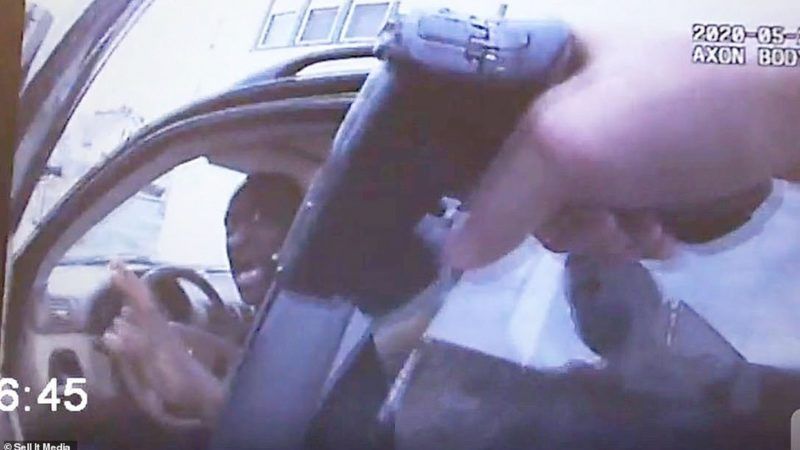Leaked Footage Shows Aggressive Cops Terrifying George Floyd in His Last Minutes Before Death
The fatal encounter demonstrates why police reformers want more departments to train officers in de-escalation.

Body camera video of the last 18 minutes of George Floyd's life has been leaked to the public, and it highlights the particularly aggressive habits of American policing in situations where it's simply not necessary.
The Daily Mail, a British news outlet, is responsible for publishing footage from the body cameras of Alex Keung and Thomas Lane, two of the four Minneapolis Police Department officers who responded to a call on May 25 from a nearby store that Floyd that claimed Floyd had attempted to buy cigarettes with a fake $20 bill. A judge had permitted some parties to view the body camera footage but had not ruled on whether to publicly release it. The Daily Mail does not say in its reporting how it obtained the footage.
The footage, which is all viewable here, shows a man who is absolutely terrified of the police and panicking, but not in a fashion that any reasonable person would conclude made him dangerous. He had not attempted to flee the scene and was sitting behind the wheel of his car when Lane approaches it and taps on the window. Moments after Floyd has opened the door, Lane points his gun at Floyd's head. Floyd is upset immediately and begs the officer not to shoot him, telling them he's been shot before.
Floyd is ordered from the vehicle, as are the other two passengers, who are told to wait next to a nearby wall. During this time the officers appear to be interested only in asserting control over the situation, constantly ordering Floyd's compliance but not really explaining what's happening. Lane even demands "Stop resisting!" when Floyd is being handcuffed, even though it does not appear that Floyd is resisting at that point.
Floyd does completely panic when the cops attempt to put him in the back of a police SUV. He keeps telling them he's claustrophobic, but they keep pushing him to get into the back of the SUV. He screams that he's going to die, and he even tells them that he had COVID-19 (an autopsy on Floyd would verify this claim). He starts repeating that he "can't breathe" while he's in the back of the car before he manages to struggle his way out of the SUV somehow (even in the footage, it's not clear how) and ends up on the ground next to it.
And that's where Officer Derek Chauvin, who had arrived on the scene with fellow Officer Tou Thao, ends up kneeling on Floyd's neck for nearly nine minutes, ultimately killing the man. On the video you can hear bystanders begging Chauvin to let him up or check Floyd's pulse, telling him, "He's not responsive!"
Lane asks the woman who was in the car with Floyd if he's drunk and why he's "being all squirrelly" with his responses. She's savvy enough not to point out that Lane had pointed a gun directly at his head and was talking to Floyd as though he were a carjacker, not a police officer. She suggests to Lane that Floyd has mental health issues.
A subsequent autopsy would show that Floyd had meth, fentanyl, and cannabinoids in his bloodstream. But none of that justifies the police aggression captured on camera. Floyd is panicking and at points resistant, especially when he's put in the police SUV, but at no point does he engage in threats, exhibit any threatening mannerisms, or act violently.
The officers' encounter with Floyd is precisely why police reformers talk about the importance of de-escalation training. The stressfulness of this entire encounter is ratcheted up every step of the way by the officers, even though the crime for which Floyd was being arrested was not violent and his responses to the police were not violent. The violence in this encounter came entirely from one direction: the police.
It's easy to say after the fact that the encounter could have and should have been handled differently given the fatal outcome. But now that the body camera footage has made its way into the public domain, it's even more clear that none of Floyd's responses to the officers merited their aggression. The Minneapolis Police Department was right to fire them all. Chauvin has since been charged with second-degree murder and the other three with aiding and abetting second-degree murder and second-degree manslaughter.


Show Comments (179)